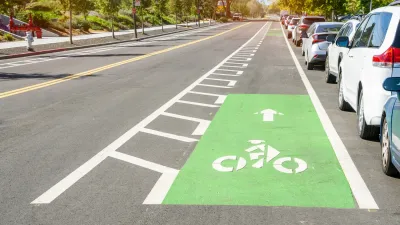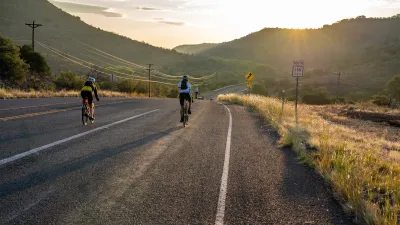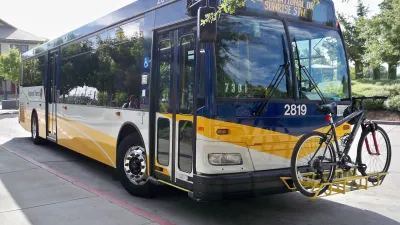Comparison of before and after counts of vehicular volume-to-capacity ratio shows replacing car lanes with bike lanes may not adversely impact vehicle traffic when bike lanes are constructed on less congested streets.
Gretchen Johnson and Aaron Johnson seek to answer how new bike lanes impact drivers, especially when they take the place of an existing vehicle lane: “It seems that unless a ton of people start commuting by bicycle, giving away a lane would cause increased car traffic. But is this really the case?”
By comparing vehicular volume-to-capacity (V/C) ratio before and after bike lanes have been added, Johnson and Johnson reveal that: “Taking away a lane does significantly increase the estimated V/C ratio during rush hour...But it’s not at a high enough V/C ratio where traffic will get really congested and start slowing down.”
Their recommendations regarding where to place new bike lanes: “Bike lanes don’t cause a lot more congestion if you put them on the right streets…if you start with roads that are well under capacity, you’ll only increase the congestion a little bit. And it may not even be noticeable.”
FULL STORY: Bike Lanes Don’t Cause Traffic Jams If You’re Smart About Where You Build Them

Trump Administration Could Effectively End Housing Voucher Program
Federal officials are eyeing major cuts to the Section 8 program that helps millions of low-income households pay rent.

Planetizen Federal Action Tracker
A weekly monitor of how Trump’s orders and actions are impacting planners and planning in America.

Ken Jennings Launches Transit Web Series
The Jeopardy champ wants you to ride public transit.

Tackling Soil Contamination With Nature-Based Solutions
Los Angeles County residents and experts are turning to nature-based methods like bioremediation to address long-standing and fire-exacerbated soil contamination without resorting to costly and disruptive removal.

Rebuilding Smarter: How LA County Is Guiding Fire-Ravaged Communities Toward Resilience
Los Angeles County is leading a coordinated effort to help fire-impacted communities rebuild with resilience by providing recovery resources, promoting fire-wise design, and aligning reconstruction with broader sustainability and climate goals.

When Borders Blur: Regional Collaboration in Action
As regional challenges outgrow city boundaries, “When Borders Blur” explores how cross-jurisdictional collaboration can drive smarter, more resilient urban planning, sharing real-world lessons from thriving partnerships across North America.
Urban Design for Planners 1: Software Tools
This six-course series explores essential urban design concepts using open source software and equips planners with the tools they need to participate fully in the urban design process.
Planning for Universal Design
Learn the tools for implementing Universal Design in planning regulations.
Ada County Highway District
Clanton & Associates, Inc.
Jessamine County Fiscal Court
Institute for Housing and Urban Development Studies (IHS)
City of Grandview
Harvard GSD Executive Education
Toledo-Lucas County Plan Commissions
Salt Lake City
NYU Wagner Graduate School of Public Service





























